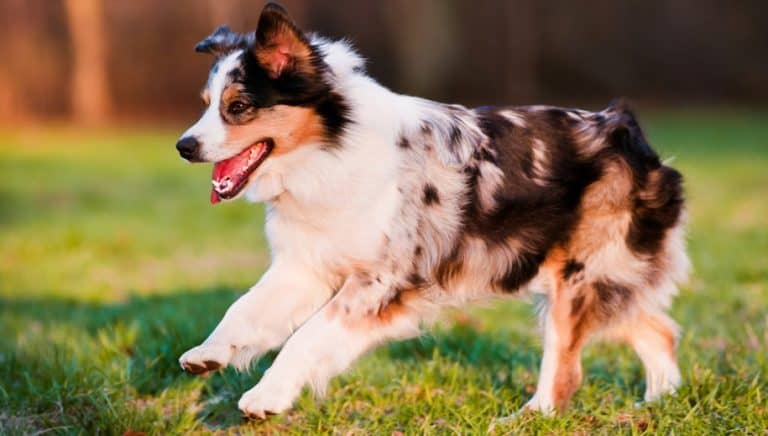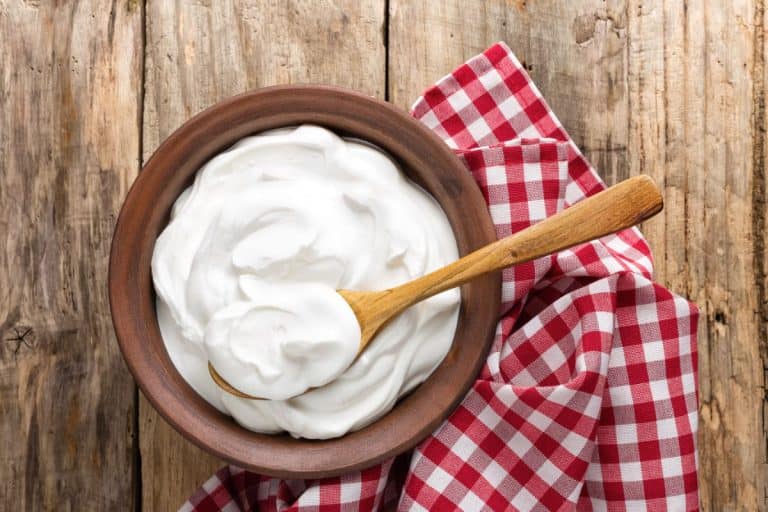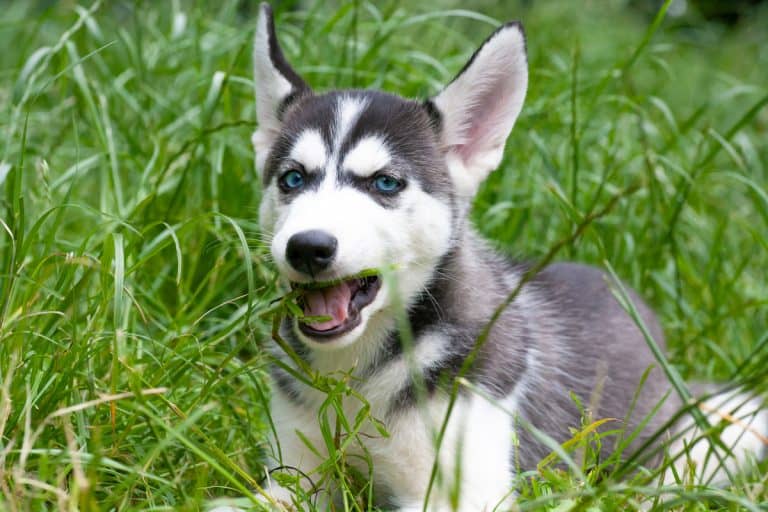How Much Exercise Does A Lab Need – Lab Exercises
Labrador Retrievers are one of the most popular dog breeds to own. They are sweet, fun-loving, and mild-tempered. But, they also have a huge tendency to be overweight and gain weight. Unfortunately, they also have a tough time losing weight once they have put it on.
One of the best ways to help keep your lab at a healthy weight is to give him enough exercise. How much exercise does labrador need? Generally, a lab needs 80 minutes of exercise every day.
We have broken down everything you need to know about proper exercise and calories when it comes to a lab and what you can do to keep him healthy and maintain the ideal activity level.
How Much Exercise Does An Adult Lab Need?
Let’s start with the biggest question: how much exercise does a lab need? To give you a short answer, an adult lab needs around 80 minutes of serious exercise a day.
Now, this exercise goes beyond their running around and playing. This is exercise that is engaging.
It is also important to know that while 80 minutes is average, your dog’s needs will depend on him. Some labs are more energetic and need more exercise to be happy.
Other labs are less excited and are happy just to rest. Those are the dogs that need the most engagement from you.
Also, remember that if your dog has overall health concerns, you might not be able to give him the same level of energy. You should work with your vet on some realistic exercise goals to help your dog stay healthy in a good way.
Why Your Lab Needs Exercise
Yes, labs need plenty of exercise, but do you know the reason behind this? If you cannot find the time to give your lab the amount of exercise he needs daily, you may want to consider choosing a different dog breed. This shows you just how important physical activity is for them.
They Lead Very Active Lifestyles
Labradors were originally bred to have active lifestyles, and to remain healthy and happy, this lifestyle needs to be maintained. The AKC lists the labrador as one of the most active breeds. Labs are well-known for their boundless energy and endurance.
Prone To Obesity
Labs are prone to canine obesity, which occurs when there is excessive body fat. If the dog is 10 to 20% over the ideal body weight, they are considered overweight or obese.
Labrador Retrievers are much more susceptible to this than other breeds. Male labs should weigh around 65 to 80 pounds, while females weigh an average of 55 to 70 pounds.
One study shows a certain gene mutation with links to weight and food motivation. The gene mutation is exclusive in Labradors, especially those service and assistance trained.
Helps Bones And Muscles
Since labs are naturally energetic dogs, their cardiovascular system becomes more efficient as it is being used. Exercise helps your dog’s blood vessels, oxygenates his blood, and lowers blood pressure. It can also build muscle and strengthen bones.
A daily walk also helps your dog go to the bathroom, which can help them avoid constipation or urinary tract infections.
Avoid Boredom
Exercise is also a good way for your dog to avoid boredom. When they get bored, they may begin chewing aggressively, barking excessively, and just become disobedient overall.
Your dog may become agitated, anxious, and destructive without exercise and adequate physical activity. They could tear up your house or start licking their paws excessively.
The Best Exercises For Your Labrador
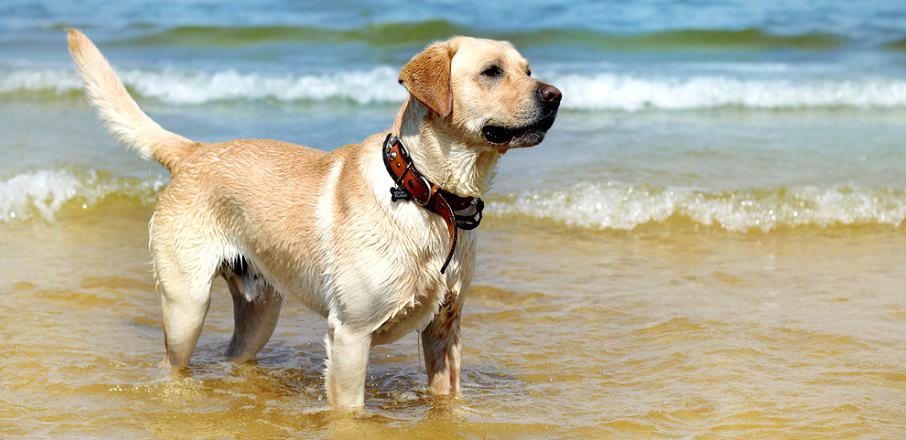
It is also a good idea to look at what kinds of exercises are the best choices for your lab. Dog walking is the go-to for most dog owners, but it is not the only option out there.
It is a good idea to add other exercises to help keep your dog busy and healthy.
Swim
Labradors are huge swimmers. The breed generally loves water, and they will happily swim. It is not the best option for all owners since you will need water access and will have a wet dog afterward.
There are dog-friendly lakes and beaches in many locations, so you should see what’s near you.
Retriever Training
Labrador Retrievers also love retrieving. It’s even in their name. If you are into hunting, you can combine your dog’s exercise with retriever training exercises. They burn a lot of calories, and the dogs have fun.
Playdates
If you can get your dog to play with another dog, it is a great way for them to burn calories. If you can get two young dogs together for just half an hour, they will get most of their exercise in. Older dogs might not enjoy the activity, however.
Sprints And Running
Labs can also be excellent running companions. If you are already a runner, your dog will likely need to build up the endurance to keep up the whole run.
You can also work them through sprints with fetching, allowing them to quickly chase an object.
Make Physical Activity Fun
When we exercise, we tend to lean more toward activities we enjoy. Maybe you like a bike over a treadmill, for example. Well, dogs are the same way. Find exercise and activities that interest and excite your dog. Do they love playing fetch, or maybe they prefer to swim?
If your dog constantly pulls on his leash during a walk or becomes aggressive toward other animals he encounters, this could mean you need to learn more training techniques to make the walks more enjoyable.
The best time for a long walk with your dog is following rush hour when people are getting home from work. An agility course at a dog park or more training may be beneficial.
Be Mindful of the Weather
Before taking your dog out for much-needed exercise, you must always be mindful of the weather. If it is hot outside, maybe shorten the walk or go at a different time of the day when it is cooler out. If the temperature is above 80°F, you don’t want to keep them outside for too long.
Early morning or evening walks will be best. You don’t want your pup burning his paws on the sidewalk or getting overheated during a long walk. If it is too hot, head inside and use a dog puzzle toy or tug-of-war toy for indoor playtime.
Keep Them Hydrated
Another tip when exercising your dog is to make sure they drink plenty of water to stay hydrated. If you enjoy taking them on a long walk on a trail, make sure there are areas with shade so your dog can stay cool.
How Many Calories Does A Labrador Burn A Day?
The number of calories that your lab burns a day will depend on the size of your lab. If your lab is an inactive dog, on average, a lab will need to consume around 1,000 calories daily.
The more active the lab, the more calories your dog will burn throughout the day.
The calculation is that you take your dog’s weight and multiply it by 25. So if your lab weighs 65 pounds, he will need about 1,600 calories of food every day to maintain his weight.
If you are trying to get your dog to lose weight, you will need to shave off a little of the calories he needs to build a calorie deficit. Do not shave off a ton because calories are still energy, so without the calories, your dog will not feel great.
How Much Exercise Does A Lab Puppy Need?
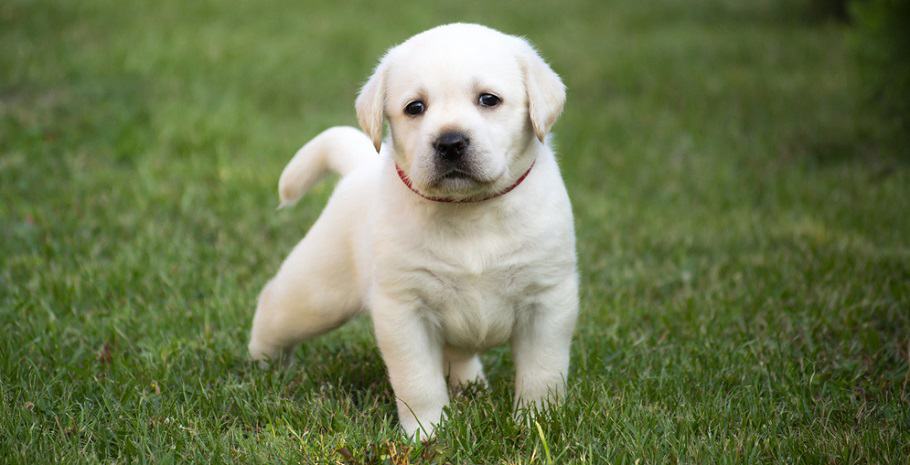
Despite their mischief and playfulness, puppies cannot be pushed as hard as adult dogs are. A really young labrador retriever puppy should not be exercised because they are babies and too much exercise can harm them and possibly cause health issues.
Over-exercising a puppy can cause developmental damage to his bones and joints while putting him at risk of exhaustion.
During the first three months of life for a labrador retriever puppy, he will get enough daily exercise from running about and playing. You do not need to exercise him more than that. He is burning a lot of calories, and even a quick romp around the yard can tire him out.
Once your puppy has received all his vaccinations, you can take him on brief walks away from the house.
You should not aim for a lot of actual walking as most of it will just be leash training at first. But slowly, you can build up your puppy’s stamina so he can handle long walks.
How Much Exercise Does A Senior Labrador Need?
Even though your dog slows down with age, giving an older dog some nice exercise is still important. Senior labs have much less energy and might also begin to develop age-related conditions that inhibit their ability to exercise.
You will want to slow down on strenuous exercise as your senior dog ages, which means staying away from high-intensity things like running and intense hiking or anything else that could be considered strenuous exercise for a senior dog.
Instead, stick with walking and swimming. Swimming is incredibly easy on aging joints; your dog should feel good doing it. And even a short walk around the block can help them avoid a health problem later. If you can’t do this yourself, consider hiring a dog walker to help.
Don’t push an elderly dog. If your dog is sleeping more, you might be over-exhausting him.
Labs tend to be stoic about injury and pain, so you might not even know that your dog has pushed himself too far until more physical signs appear, such as limping and excessive sleeping. Always check with your vet, but take cues from your dog as well.
What Happens If You Don’t Exercise Your Lab Enough?
Thinking about how much you can play with and exercise your lab every day, you might start to wonder whether you are not exercising your lab enough.
There are definitely consequences to not exercising your lab. As we briefly discussed earlier, you will likely see two primary consequences: destructive behavior and health issues.
One side effect of an under-exercised lab is boredom. When dogs get bored, they look for trouble. Digging is one of the biggest destructive behaviors you will see in a dog that has been left outside. Chewing is the other, especially for a dog locked inside.
Beyond bad behavior, not exercising your lab means that he has a bigger risk of developing obesity as well as weight-related problems, such as heart disease, high blood pressure, and even diabetes.
Labs are big eaters, so it is not unusual to see overweight labs; you don’t want that.
How To Exercise An Overweight Lab
Seeing your furry friend as overweight and unhealthy can be incredibly discouraging. It isn’t a big surprise for lab owners, but they already know that labs will devour any food set in front of them, so you need to be cautious with the dog food to prevent your dog from becoming overweight.
This will not work for everyone, so if your dog has become overweight, there are some exercises that you can try to help him lose weight.
To help your overweight lab lose some weight, one place to start would be to take him somewhere different to exercise. It could be that you usually take him for walks around the block, but maybe you haven’t taken him swimming.
You can increase the intensity of the exercise but do so very slowly. Overweight dogs will have a lot more pressure on their knees and joints, so too much exercise too quickly can cause many problems.
You can also change the stakes of the exercise. Taking your dog for simple walks around the block is not that fun or exciting. Why not play a sport with your dog? Dogs love Frisbee, soccer, and tennis. They could exercise and enjoy themselves while doing it.
Can You Over Exercise A Labrador?
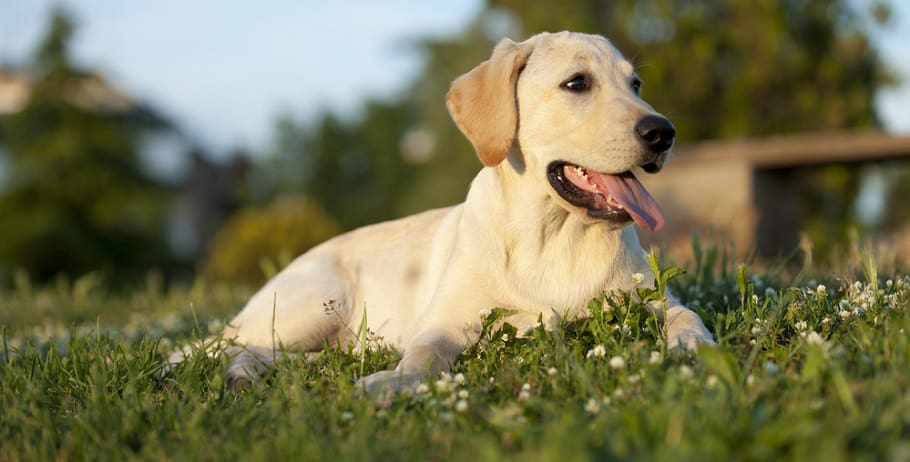
You might wonder whether it is possible to over-exercise a lab since they are not all incredibly interested in exercise. While we definitely promote exercising your lab, there are always risks involved that you should know about.
A lab not used to intense exercise cannot just start exercising intensively. They have to build up to long runs or hikes. They will not be naturally inclined to do heavy workouts, especially if they aren’t used to it.
If you are upping the amount of exercise your lab gets, you need to bump up the exercise gradually over time. That way, you will not run into exhaustion and injury.
There have been many reports on the news about dog owners who took their dogs on hikes only to find out that the dog couldn’t make it, resulting in them calling in for emergency help to get the dog down. Don’t do that to your lab.
What To Do If Your Lab Is Always Lazy?
Your lab might be lying around a lot throughout the day and may be unwilling to exercise. Knowing what you can do with a dog to get him back up and moving around is hard. Here are some things to do if you think your dog is lazy:
- Consider that he isn’t lazy. There is a chance that your dog is not lazy at all, but something else is going on. Your dog might be injured and unwilling to move. You can also consider that your dog is ill. A vet visit would be a good idea.
- The weather is too hot. When a dog gets too hot, he is far more likely to be interested in sleep than getting up and playing. Make sure that he has enough water and shade.
- He isn’t getting enough exercise. It might sound counterintuitive, but it’s not. Dogs that are not used to moving are not going to willingly move. Make the exercise fun, and your dog will engage.
- Take him to the dog park. Maybe he needs to be more sociable and play with other dogs. A dog park is a good place for some vigorous exercise and even dog training time.
Signs That Your Lab Is Not Getting Enough Exercise
If you are worried that your lab isn’t getting enough exercise, there are some signs that you can look for to give you a clue. Fortunately, it is pretty easy to tell if your lab is not getting enough exercise as long as you follow the signs.
- Destructive Behaviour: Remember that we mentioned that labs are a high-energy kind of dog breed. That means they will destructively spend their energy if they have not constructively spent their energy. Destructive behavior includes chewing things that aren’t dog toys, as well as digging up your yard.
- Weight Gain: If your lab is suddenly packing on the pounds, he might not get enough exercise. You might have slowed down the amount of time you are dedicating to him getting his exercise a day, and you just need to pick it back up.
- Unable to follow commands: If your lab has been trained to follow basic commands but cannot manage to follow them, he likely has more energy that needs to be burned.
- Becomes less sociable: If your lab starts to be withdrawn and less sociable and isn’t as interested in things as before, it could be that he is not receiving enough exercise and is unhappy with the situation.
If you see any of these signs, try upping your lab’s activity level and see if it stops.
Mental Stimulation For Your Adult Labrador Or Puppy
In addition to physical activity and regular exercise, your adult dog or labrador puppy also needs mental stimulation and enrichment, including a change in scenery, new toys and scents, and social interaction. This could mean a long walk, playtime with another dog you know, dog treats, chewing toys, or even turning the tv on for a while for auditory stimulation.
Consider interactive toys that help train the dog’s brain for good mental exercise. These toys should allow them to chew, sniff, and explore. Kong dog toys, for example, are good for this, and a puppy puzzle would also make a good toy for mental exercise.
Final Words
When it comes down to it, labs are a high-energy dog breed that requires a lot of good, healthy daily exercise to keep their weight down while still managing to burn out a lot of their energy.
If you do not succeed in getting your dog to exercise well, you will likely see many destructive behaviors and weight gain, neither of which any dog owner wants.
While you don’t want to push puppies or senior labs, remember that adolescent and adult labs need a lot of physical exercise to burn out the energy they have built up.

